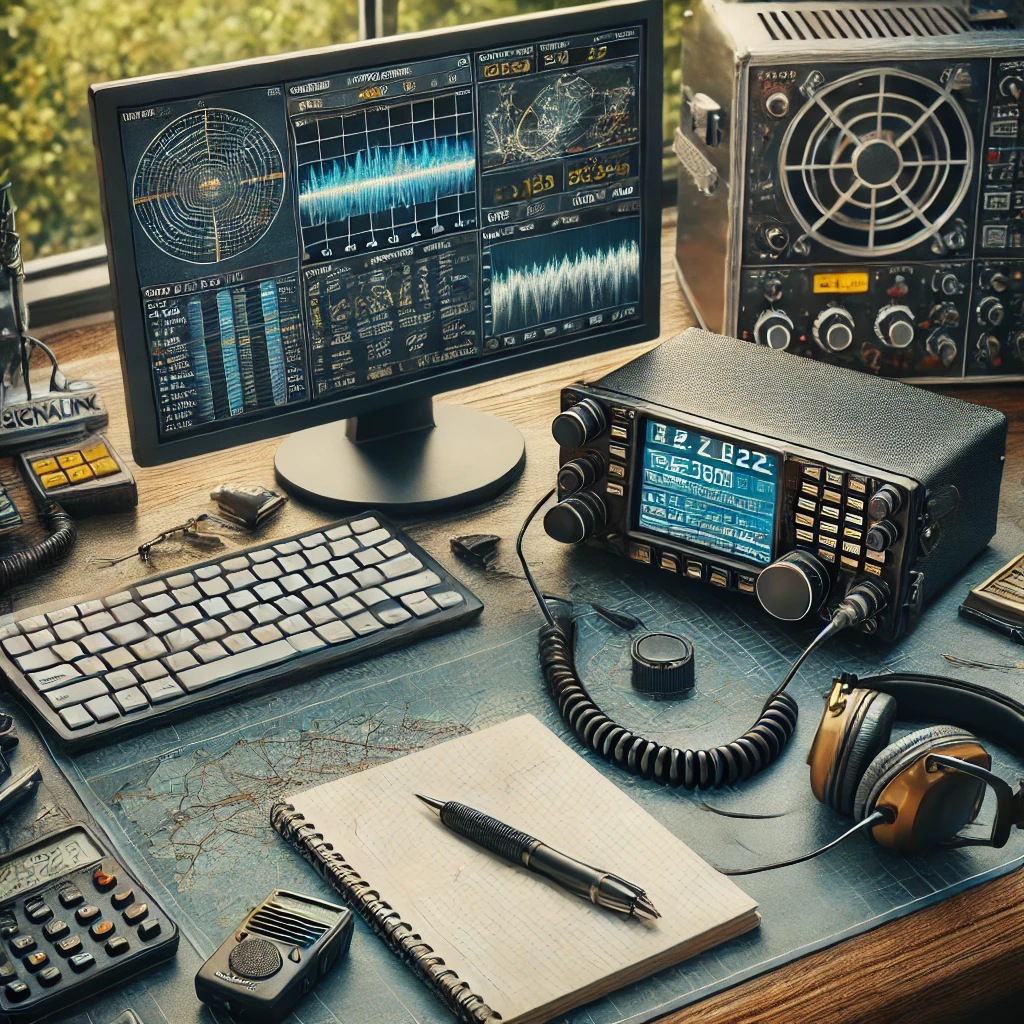Introduction
When disaster strikes, communication becomes the lifeline between chaos and order. Conventional communication systems, like cell towers and internet connections, are often the first to fail during emergencies. This is where amateur radio operators step in, bridging the gap with reliable and effective communication solutions. Among their arsenal of tools, QSK (Quick Sequential Keying) shines as a powerful digital mode that is fast, efficient, and dependable under the most challenging conditions.

But QSK isn’t just about transmitting Morse code or sending data quickly. It’s a tool for real-time problem-solving, precise coordination, and adaptability in emergencies. In this guide, we’ll dive into what makes QSK unique, its advantages, and how to harness its full potential.
What Makes QSK Unique?
At its core, QSK allows operators to switch between transmitting and receiving almost instantaneously. This capability, often referred to as “full break-in operation,” was originally designed for CW (Morse Code) but has evolved to enhance modern digital modes. This instant back-and-forth communication eliminates delays and enables real-time interaction, a critical feature in emergency operations where every second counts.
With QSK, operators can:
- Interrupt their own transmission to respond to urgent incoming information.
- Coordinate complex tasks without waiting for signal delays.
- Monitor other operators in real-time while still actively transmitting.
Why QSK Excels in Emergency Scenarios
1. Real-Time Coordination: Imagine coordinating search-and-rescue teams across different locations. With QSK, an operator can immediately acknowledge instructions or issue corrections without waiting for a transmission to end. This makes it ideal for high-pressure, time-sensitive situations.
2. Reliable in Adverse Conditions: During natural disasters or remote expeditions, signal strength and power availability can be unpredictable. QSK’s efficiency allows operators to communicate effectively even with minimal power or under noisy conditions.
3. Superior Bandwidth Management: In emergencies, communication frequencies can get crowded. QSK optimizes bandwidth usage, enabling multiple operators to share frequencies without interference, ensuring critical messages get through.

Real-World Applications of QSK
QSK has proven itself in numerous real-world scenarios:
- Natural Disasters: After hurricanes, earthquakes, or floods, amateur radio operators using QSK can relay shelter locations, medical needs, and weather updates to relief teams.
- Remote Expeditions: Adventurers and researchers in isolated regions use QSK to maintain reliable communication with their base camps.
- Community Events: During marathons or parades, QSK ensures smooth coordination between volunteers, medical teams, and event organizers.
Setting Up Your QSK Station
Setting up a QSK-enabled station isn’t just about buying the right equipment; it’s about understanding how to optimize your tools for seamless operation. Here’s how to get started:
Step 1: Gather Your Equipment: To set up a QSK station, you need the following:
- A QSK-compatible transceiver
- A Signalink USB interface
- A computer running FLdigi, WSJT-Z or similar software
Step 2: Configure Your Transceiver: Ensure your transceiver is set to enable QSK operation, allowing for seamless transmit/receive switching. Refer to your equipment manual for specific instructions.
Step 3: Install and Configure Software: Programs like FLdigi not only decode signals but also provide advanced tools for managing QSK operations. Configure your software to integrate smoothly with your transceiver and digital interface.
Step 4: Practice in Simulations: Conduct drills to test your station under simulated emergency conditions. This ensures that when disaster strikes, you’re fully prepared to assist.

Conclusion
QSK is more than just a feature; it’s a lifeline in emergencies. Its ability to enable real-time interaction, maintain reliability under adverse conditions, and manage bandwidth efficiently makes it an essential tool for amateur radio operators. Whether you’re coordinating disaster relief or simply ensuring reliable communication during remote expeditions, QSK is your key to success.
Equip your station, practice your skills, and be ready to make a difference when it matters most.
